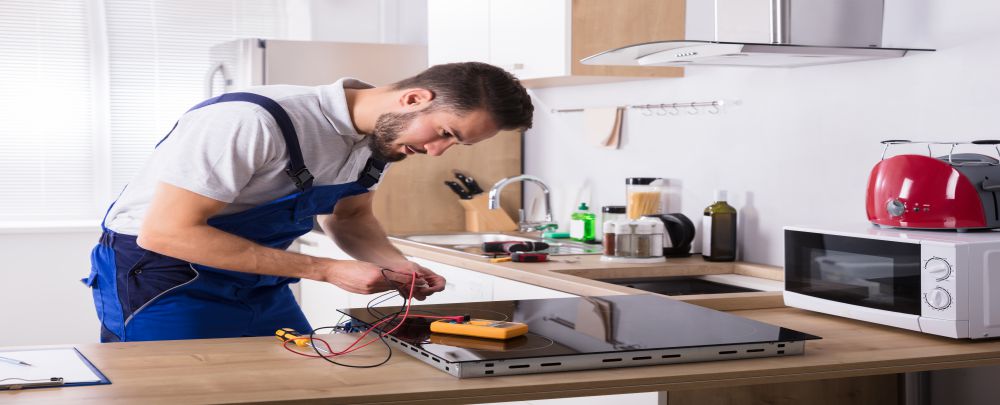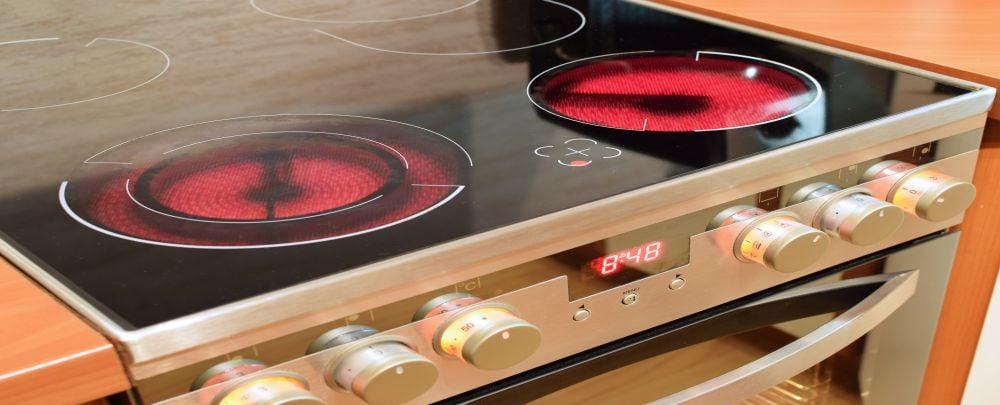An electric stove – sometimes called an electric range – is a godsend for every homeowner. Convenient and flexible, it is simple to install, use, and even clean. Thanks to this modern creation, whipping up a wide range of dishes for you and your family has never been easier. After some time, though, your stove may go kaput – and that includes not turning off properly.
So, what do you do when you have already prepped your meals, but your stove is still on full blast? Here is how you may turn it off.
Possible Reasons Why the Electric Stove Is Not Turning Off and How to Fix
There are several reasons why your electric stove won’t turn off. It can be as simple as a broken knob, or something far more complicated, like a malfunctioning surface element or switch.
Electric stoves, regardless of type or brand, essentially operate the same way. That is, they rely on electricity to produce heat. With that said, the first step to diagnosing the problem is to unplug the stove. Depending on how severe the issue is, you might be able to fix it by yourself. If not, don’t worry. Just call the best appliance repair service, and they will get the job done in no time.
I. Broken Knob
Control knobs are the dials typically found in front or on top of your electric stove. They allow you to activate each of the burners – the parts that emit the flame – one by one, as well as regulate the amount of heat you want to use. If you own a kitchen range, the knobs will also give you the means to set the temperature and timer of the oven.
Once the knob gets stuck (or worse, broken), it may not be able to turn properly. Alternatively, it might be turning too loosely without any friction. In some cases, the burner may even appear like it is turned off, when, in reality, it is not.
A faulty control knob is perhaps the most common reason why your electric stove won’t turn off. Lucky for you, it is relatively easy to repair.
How to fix the stove knob:
- To confirm if a busted control knob is indeed the problem, you will have to test and remove it first. Again, make sure that the stove is already unplugged before getting started.
- To detach the knob, simply pull it carefully. It should slide easily into your hand.
- If the knob appears stuck, do not force it. Pulling harder may only cause the knob to break and separate from the metal prong attaching it to the stove. Instead, try wrapping a towel, flexible wire, or string around the shaft behind the knob, then pull it outward to pry it off.
- Inspect the stove knob. If it is broken, you may notice that the components holding it into place are broken. If so, you will need to replace the knob. Fortunately, replacement parts are readily available on Amazon or your local hardware store. If not, reach out to the stove’s manufacturer instead.
- Replacing the knobs is a no-brainer. If you obtained the right parts, they should attach to the metal shaft without any issues. Just make sure to refer to the instruction manual and follow it to the letter.
Note: Generally, it is not recommended to use your stove with the knobs removed. If only one knob is broken, then there won’t be any problems. You can just use the other functional burners. But if most (or all) of the control knobs are out of commission, try using a pair of pliers to grip and turn the exposed metal prong in your desired direction – the way you normally would with a control knob.
Related Article: What Are the Different Types of Stovetops and Which Is Best for You?
II. Faulty Surface Element
A stove’s surface element – sometimes called a surface burner – is the part that provides heat to the cooktop. In essence, it uses heating elements to convert electrical energy into heat. An electric kitchen range or stove may employ several heating element styles, including simple coil elements, metal disks, radiant heating elements, or magnetic induction elements. Furthermore, electric stoves typically feature four burners, which come in different sizes and vary from one model to another.
Over time, the stove’s surface element may stop functioning correctly due to excessive wear and tear. In other words, it has simply reached the end of its lifespan. Another possible culprit is the buildup of grease and spills. As you might expect, a defective surface element could prevent your stove from shutting off properly. If this is the case, you will need to replace the surface burner immediately.

How to fix the surface element:
- Make sure that the electric stove has been disconnected from power. If it has been recently used, wait for it to cool off before proceeding.
- Begin by removing the surface element from the stove. The exact removal process may vary from product to product, so, as always, make sure to refer to the instruction manual.
- Inspect the surface element for any signs of damage or heavy wear. Radiant coil elements, for example, will have visible burn spots or breaks in the coils. You may also want to check the terminals and the terminal sockets.
- In the absence of visual cues, your best bet is to perform a continuity test using a multimeter. This will determine if electric current flows from one point to another, indicating that the burner is still working properly. If not, then the heating element is already burned out and will require a replacement. Unfortunately, there is no way to repair it.
- After purchasing the necessary replacement parts, just follow the product’s step-by-step instructions on how to install them.
Related Article: How to Repair an Oven Not Heating Up
III. Defective Surface Element Switch
What if you have already installed a new surface element, but your stove still won’t turn off? In this case, the surface element switch – also referred to as the surface burner switch or infinite burner switch – is most likely the problem.
In a nutshell, a surface element switch instructs your electric stove when to turn on and on, as well as how hot the flames should be. This is done by sending voltage to the surface element coil. Additionally, this component also cuts off the power when the desired temperature has been reached, preventing the surface element from getting excessively hot or cold, and guaranteeing a smooth, even burning.
With repeated usage, the infinite switch will eventually wear out. It may also have sustained some damage along the way, such as a short circuit. And once it has conked out, it won’t be able to properly signal the stove that it is time to shut off. Instead, it may get stuck on full heat. Like a surface element, a switch is irreparable and will need to be replaced.
How to fix the surface element switch:
- Make sure that your electric stove is unplugged and cool to the touch before getting started.
- Consult the owner’s manual to find out where the surface element switch is located. Usually, it is found at the rear of the appliance.
- Examine the switch for any signs of damage. Do the wires appear overheated? Unfortunately, a visual inspection is the only way to check an infinite switch. There are no tests that could confirm if it is indeed defective or not. So, if you suspect that your switch is broken, replace it right away. Again, replacement parts are widely available online or even in the hardware stores near you.
Related Article: Electric Stove Not Heating Up: Causes and How to Fix
When to Let Professionals Handle the Problem
An electric stove, although incredibly high-powered and convenient, is not indestructible. Like any other appliance, it may simply stop working properly at one point. Maybe some parts have sustained damage through the years – or they have already reached the end of their life cycle. When this happens, you may experience various problems, including the stove not turning off. Fortunately, by following the above instructions, you should be able to troubleshoot and even fix the issue the DIY way.
What if you have tried everything, but to no avail? In this case, it might be time to bring in professionals – and let them do the grunt work for you. Equipped with the right skills and experience, they could resolve the problem in record time and let you enjoy your beloved electric stove once more. Call Prime Appliance Repairs today!






